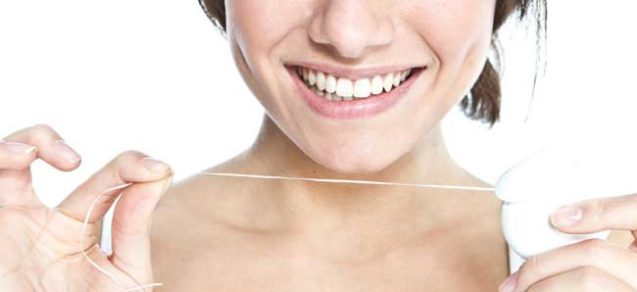Imagine you are eating a big, juicy steak cooked to perfection. You cut out a chunk of steak place it in your mouth. The first bite is delicious, and the second bite is even better.
But then, in your fervor for chewing, you forget where the steak ends and where your cheek begins. Before you know it–chomp!–a bite that was intended for that tasty piece of steak caught your cheek. It’s painful and irritating, but you can get past the pain.
The next day, your wound is healing well, but unfortunately during lunch you bite down on it again. Now it’s official: you have a full blown canker sore. While not all canker sores are self-inflicted, it’s good to know what causes canker sores and some remedies you can implement to promote healing while reducing pain.
For the most part, canker sores are more of a nuisance than a health issue. They can appear on the inside of your lips, cheeks and on your tongue. They can either be caused by trauma (like biting on the inside of your cheek or braces irritating your mouth) or other factors like stress and the types of food you eat.
Avoid agitating your canker sore
- Try not to hit it with your toothbrush.
- Steer clear of foods that will annoy your canker sore, including crunchy, dry, or acidic foods–especially citrus!
- If you have braces, apply wax where the canker sore comes in contact with them. If your braces or dentures continue to cause discomfort and canker sores, your dentist may be able to make the proper adjustments to fix the issue.
Since most canker sores go away on their own, the best thing you can do is manage the pain
- Gargle with salt water. Mix about ¼ to ½ teaspoons of salt with eight ounces of warm water. Put about two to three ounces of water into your mouth at a time and swish it around for 20-30 seconds, then spit it out. Continue to do this until all of the water is gone.
- Consider using a local numbing agent. Products like Oragel can be applied to the canker sore and numb it for temporary relief. These types of products contain benzocaine, so please read all cautions before applying.
- Take over-the-counter pain relief medication, like ibuprofen.
If your canker sore doesn’t heal within a few weeks, it’s time to see a dentist. If your canker sore makes it too painful to eat or drink, consider seeing your dentist before the three week mark. Make an appointment with your local Lancaster dentist if you think you may need additional canker sore treatment.
More
When you think about myths, chances are your first reaction is to think about the classics—Greek myths with monsters and gods, classic American myths like Paul Bunyan or Rip Van Winkle, or maybe even urban legends. Historically, myths helped our ancestors make sense of the world and explain why they thought and acted the way they did.
But not all myths are ancient. We still create myths today, and they serve the same purpose that ancient myths did. We use them to understand complex topics and to justify our choices—at times for good, and at times not so good reasons.
There are myths about almost any topic if you bother to look—and that includes dentistry. Let’s look at five dental myths, unpack where they come from, and determine if we’d be better off telling these stories to our children or doing away with them altogether.
George Washington had wooden teeth
Right there along with leading the Revolutionary Army, being first president of the USA, and the cherry tree (false!), elementary school students learn about George Washington and his wooden dentures.
It’s true that dental problems plagued Washington. He had his first tooth extracted when he was 24, and by the time he became president in 1789, he only had one tooth left. He wore many dental prostheses during his life—but they were the most advanced dental technology of his time, and were made of ivory, gold, metal, and even human teeth. The “wooden” myth may have arisen because ivory dentures become stained over time.
Verdict: False… but truth can be more disturbing than fiction.
Brush your teeth right after every meal
Let’s look at some basic assumptions about oral hygiene that are true. First, food particles on your teeth can lead to cavities. Second, brushing your teeth removes food particles. The logical conclusion, of course, is that getting the food off your teeth faster must be better.
Well, Mr. Spock, you may be logical—but you’re wrong! Your mouth is already working to protect your teeth—with tooth enamel (the hardest substance in your body) and saliva. The acids in saliva work to break down food—but they also temporarily soften your tooth enamel. Brushing too soon after meals can actually damage your tooth enamel. Give yourself a little break, and wait 30 minutes after meals before you brush.
Verdict: False… but with the best motivation.
Whitening your teeth weakens them
Hmm… bathing your teeth in chemicals, even relatively benign ones, doesn’t sound like a good idea. I mean everyone’s heard the one about the tooth dissolving in a cup of Coca-Cola, right? (Don’t worry, we’re getting to that one next.) Therefore whitening—with trays or even strips—must weaken them, right?
Technically, no. Whitening strips or trays use hydrogen peroxide or carbamide peroxide to remove stains on the teeth through the process of oxidization.
When overused, they can remove 1-2 nanometers of enamel from your teeth, which isn’t great—but then again, a hair is about 80 to 100 thousand nanometers thick, so we’re splitting hairs. Into about 40,000 parts.
Verdict: False… because we think it’s ok to round 0.000025% down to zero.
Leave a tooth in Coke and it’ll dissolve overnight
We can’t do a better job in 100 words than the myth-debunkers extraordinaire at Snopes.com can do in 700, but let’s give it a try. Coke is acidic—but not acidic enough to dissolve a tooth overnight. The acids in coke could eventually dissolve a tooth, but so could the acids in a glass of orange juice. The implication—that we shouldn’t drink Coke because it’s bad for our teeth—is based on a false premise. We drink Coke, not hold it in our mouth for several days at a time. You could argue that most people can do without the hundred plus calories in a serving of soda, but that’s not a myth. It’s a fact.
Verdict: False… but that doesn’t mean it’s not bad for you.
The Tooth Fairy
The idea that a fairy wants to collect children’s teeth so badly it’s willing to pay for them is, on the surface, ridiculous. With more than 7 billion people on the planet… how many teeth can a single fairy—or even a society of tooth fairies—want? But then again, who would believe that a single fat man could traverse the globe in one night, in a sleigh powered by reindeer, delivering gifts to children by climbing down their chimneys? Science can explain most things, perhaps even the lengths people go to please their children, but do we really want to?
Verdict: True… for the children.
More
What You Need To Know:
The Effect Diabetes Has On Oral Health
Diabetes affects every aspect of your life. From ensuring your blood sugar is at the right level to keeping up with regular exercise, managing diabetes is no easy task. You must be aware of many complications that can arise from diabetes, and your oral health is no exception. Since it’s National Diabetes Month, we have provided information and tips to consider regarding the relationship between diabetes and your oral health.
According to the Centers for Disease Control, 29.1 million Americans have diabetes—and 8.1 million of those do not know they have the disease. If you’re not sure if you might have diabetes, the first step to taking care of your body is finding out if that’s the case. Some common symptoms of diabetes include:
- Blurred vision
- Hunger and fatigue
- Peeing more frequently while also being thirstier
- Dry mouth and itchy skin
More symptoms that can indicate longer term damage caused by diabetes include:
- Yeast Infections (for both genders)
- Pain or numbness in your legs and feet
- Cuts or sores that heal slowly
If you are experiencing these symptoms, go see your physician and get tested for diabetes. For your oral health, the symptoms take a while longer to show that actual damage that is occurring in your mouth if left untreated. Keep notice for symptoms like:
- Puffy, swollen gums that bleed when brushed or flossed
- Loose teeth
- Bad breath
- Receding gums
These are all signs of gingivitis, which if left untreated, can turn into periodontitis.
How does diabetes contribute to gum disease?
There are a few major ways diabetes affects your mouth. First, if your blood sugar levels are left unchecked, the glucose level of your saliva rises. Glucose is a type of sugar, and bacteria loves sugar, which will speed up the progress of gum disease. Second, with diabetes, your blood vessels thicken, making it harder for them to deliver oxygen and nutrients, as well as to take away waste. Lastly, a symptom of diabetes is dry mouth. Saliva helps keep the bacteria from sticking to your teeth, and a lack of saliva makes it easier for plaque and tartar to develop.
How do I prevent gum disease caused by diabetes?
- Control your blood sugar levels. This is done in many ways, such as taking insulin injections, eating different foods, exercising, and visiting your physician regularly.
- Brush and floss every day — This advice may seem obvious, but it’s tried and true. Removing plaque from your gumline and stimulating your gums are an excellent way to prevent gum disease.
- Visit your dentist for teeth cleanings — If you don’t have signs of gum disease yet, stay up to date on your regular teeth cleaning every six months. If you do have gingivitis or periodontal disease, a deeper clean will be required to prevent further tooth damage.
Whether you have diabetes or not, it is still very important to take care of your mouth. Recent studies have shown that not only are people with diabetes more likely to be afflicted by periodontal disease, but people with periodontal disease are more susceptible to getting diabetes as well.
While diabetes and periodontal disease can affect your quality of life, if treated early and often, you can mitigate much damage caused by these diseases. Call (661) 952-7865 to see how we can help today.
Sources:
http://www.diabetes.org/living-with-diabetes/treatment-and-care/oral-health-and-hygiene/diabetes-and-oral-health.html
http://www.diabetes.org/living-with-diabetes/treatment-and-care/oral-health-and-hygiene/warning-signs.html
http://www.mouthhealthy.org/en/az-topics/d/diabetes
More
By admin
01 Nov, 2016
Dental Health, Dental Tips, General Dentistry, General Health, Lifestyle, Oral Health, Preventive Dental Care
flossing, flossing alternatives, interdental brushes, waterpik
Flossing: In or Out?
It’s been six months since your last teeth cleaning. You arrive at your appointment and get called to head to the back by your hygienist. As she begins cleaning your teeth, she asks the question we all dread. “How often do you floss?” If you’re like many people, you might stretch the truth, or justify telling a white lie since you DID use a toothpick after dinner a few nights back.
Maybe now—lucky you!–you won’t have to answer that question any longer. Just recently the USDA and Department of Health and Human Services stated that flossing has been not been proven to be effective, and removed it from their dietary guidelines.
Well, slow down, my friend. You’re not off the hook just yet.
While this bold statement is technically true, there are still a few things to consider. First, the guidelines don’t say that flossing is bad or ineffective; they’re just saying there isn’t enough evidence in studies to prove it does help. The difference may feel like a matter of semantics, so for your own peace of mind, ask any dentist if you should floss. But you probably already know what their answer will be.
Your teeth consist of five surfaces, and brushing your teeth will hit all but two. Flossing will take care of the two remaining surfaces (the surfaces between your teeth) and ensure that plaque does not become tartar, which eats away at your teeth and gums. While flossing can help prevent tooth decay, a study by the Central for Disease Control shows that only 30% of the U.S. population flosses daily.
If you’re one of the 70% of people who don’t floss daily, you should know there are many alternatives to floss out there that can be just as effective in cleaning between your teeth.
Interdental Brushes – These are little brushes that you used to brush in between your teeth. People find these much easier to use than floss, and are good for people who have braces or larger gaps between their teeth.
Waterpik – The waterpik shoots a small, strong stream of water that can fit between small crevices in your teeth. It’s great to use for washing away plaque that can gather in pockets, but can take more time to master than floss or interdental brushes.
Floss Picks – A floss pick is a small piece of floss attached to a handle. These have become popular in recent times due to how convenient they are to use, but there are a few things to consider when using them. Since the floss is attached to a handle, manipulating the floss to hit all of the surfaces of your teeth can be difficult. Additionally, the recommended amount of floss to be used in a session is 12-18 inches, and the typical floss pick is only about two inches. Consider using more than one floss pick per session.
Regardless of what technique you use to clean between your teeth, the overall consensus is that anything is better than nothing.
Have a difficult time flossing every day? Start by doing it three times a week. Flossing takes time and doesn’t give immediate results, but think of it as an investment in your mouth’s future.
If you have any concerns about flossing, reach out to your Lancaster, CA dentist today. Just think about how good it will feel to tell your dentist and hygienist that you’ve been consistently cleaning in between your teeth!
More

The weather is finally turning, and you only have a couple of months left to get the most out of your yearly dental insurance. Visiting the dentist may not be on your annual to-do list, but it is key to maintaining optimal oral health. With the holidays — and all of those treats and sweets — on the horizon, now is the perfect time to prepare and protect your pearly whites so you can enjoy the celebratory season that lies ahead.
Why Wait?
Along with dental benefits, FSA (Flexible Spending Account) and HSA (Health Saving Account) benefits expire at the end of the year. If you haven’t met your yearly maximum, the remaining amount likely won’t roll over into the next year, and you’ll lose your opportunity to make the most of those dollars. Also, if your insurance plan includes a deductible you’ve already met, it only makes sense to reap the full value of your insurance now, before the next plan year, when you have to meet the deductible again.
Benefiting From Your Benefits
Taking advantage of your unused benefits could save you hundreds of dollars. Routine dental exams can prevent oral conditions that are costly to correct. There is also a good chance the cost of your dental insurance will increase in the new year. Remember, you’re paying for your insurance, so getting the most out of it at its current price just makes sense.
What Can I Use My Benefits For?
If you are not experiencing an oral health emergency, a preventive approach to your oral health will save you money and discomfort down the road. Scheduling a regular visit with your dentist gives them an opportunity to protect and fortify your teeth against any health threats. They can also identify early signs of decay or emerging periodontal disease. When caught in the early stages, the effects of both of these conditions can be stopped and, in some cases, reversed.
Consider These Treatments
If you don’t need extensive work, consider using your remaining insurance benefits for the following:
- Cleanings
- Fluoride treatments
- Sealants
- Periodontics
To find out more about how you can get the most out of your dental insurance plan, call (661) 952-7865 today and talk to one of our professionals. We will help you figure out how you can maximize your oral health and maintain your beautiful smile.
More





